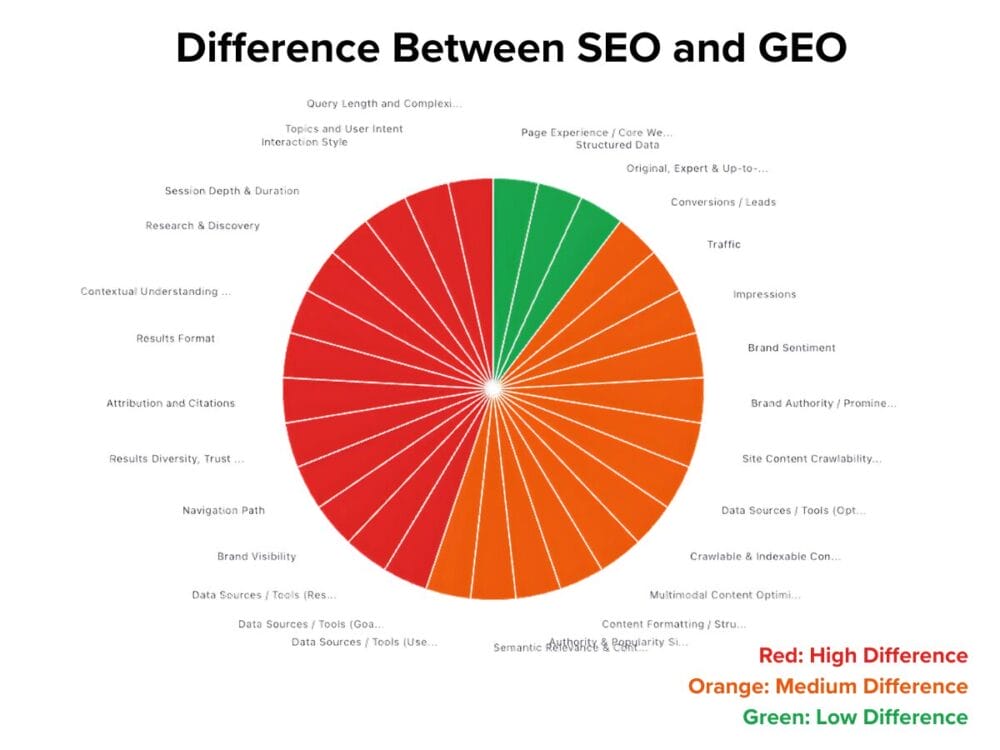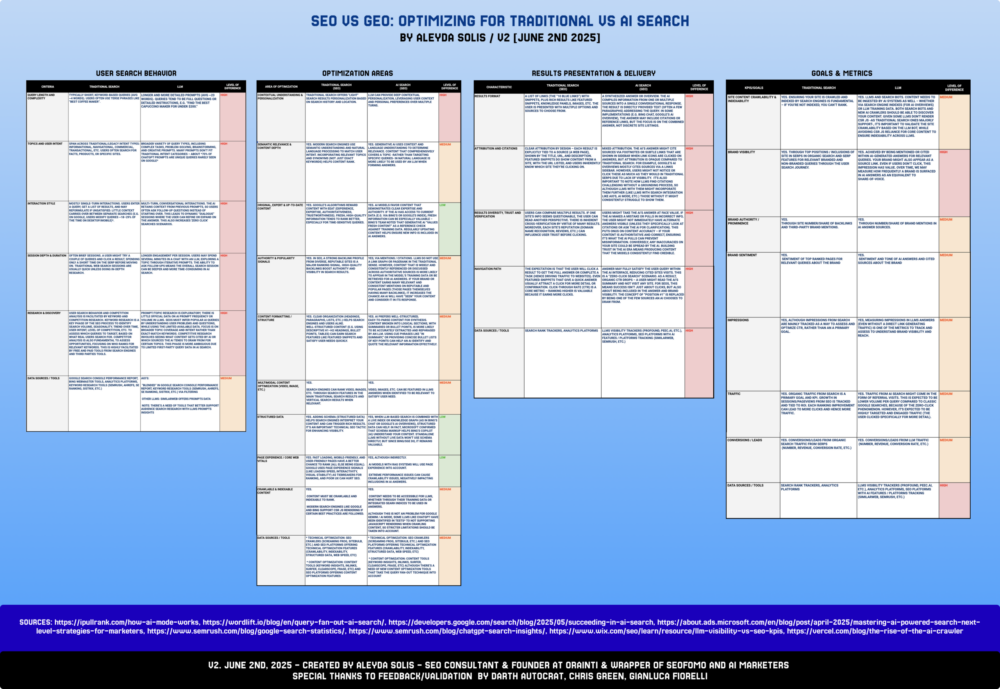By Purva Gupta, Co-Founder and CEO of Lily AI
Key Takeaways:
- SEO and GEO are both similar and different in many ways, the key is knowing how.
- Content is one of the few areas where variable similarities are most similar.
- Both SEO and GEO prefer quality content that is fresh, in-depth, structured, and conversational.
I’m often asked by retail executives, ‘ How different is GEO or AEO from traditional SEO, really? ‘ The answer is, as with most things related to AI, it’s complicated!
If you’re already confused, let’s first define SEO vs GEO (and we’ve got more FAQs here!). GEO, or Generative Engine Optimization, is an emerging new discipline that enhances digital content to be found and favored by AI-powered search engines. The retailer’s goal is similar to Search Engine Optimization (SEO), which involves organically increasing product visibility and driving more traffic to an e-commerce website.
In the SEO world, success has long been tied to Google rankings and adapting to its continually evolving algorithms. In the GEO world, the landscape is broader.
Google remains central with Gemini and Google’s AI Mode; however, other answer engines and LLMs, such as ChatGPT, Perplexity, Claude, Grok, and DeepSeek, are also influencing how content and products are discovered.
In the answer engine space, specifically ChatGPT is the leader, yet there’s a lot more competition than traditional search. For the latest, Datos and Sparktoro have some great benchmarking in their new report State of Search Q1 2025: Behaviors, Trends, and Clicks Across the US & Europe.
Why Are Executives Focused on GEO?
Let’s start by addressing why GEO is a hot topic in the C-suite. Why are retail executives, and not just SEO and digital marketing teams, concerned about GEO? Simple. It’s where their customers are, and in many ways, a critical competitive battleground for both brand visibility and driving sales.
Lily AI’s recent consumer research found that already, 40% of consumers report using AI-powered search for shopping. If you’re an “avid” shopper purchasing online at least five times a month, that number jumps to 70%!
There is a growing list of new data and analysis being produced on consumer adoption of GEO and AI-powered search and shopping, and one such expert, Aleyda Solis, recently published a fantastic, in-depth overview on SEO vs. GEO. Here, we’ll synthesize the areas where SEO and GEO tactics tightly converge, and review the role of Product Content Optimization (PCO) in thriving in the world of SEO and GEO.
3 Ways SEO and GEO Are Most Similar
In Aleyda Solís’s comprehensive breakdown of SEO vs GEO, she evaluated 29 variables across four dimensions:
- User Search Behavior
- Optimization Areas
- Results Presentation & Delivery
- Goals & Metrics
Below is a birds-eye view of that analysis, as well as a link to an easier read Google Sheet version!
Here’s the breakdown from Solís’s comparison, looking at whether there was a high, medium, or low level of difference between SEO and GEO:
- 45% or 13/29 were high
- 45% or 13/29 were medium
- 10% or 3/29 were low

This clearly indicates that while most SEO and GEO criteria and practices diverge to a high or medium degree at least 90% of the time, there are 3 key areas that strongly benefit both SEO and GEO:
- Original, Expert & Up-to-Date Content: Both reward content that is updated, rich in detail, and written in clear, natural language.
- Structured Data: Schema markup continues to help both traditional search engines and generative AI platforms interpret and surface content.
- Page Experience / Core Web Vitals: Indirectly, however, as it’s noted that extreme performance issues can impact crawlability.
Of note, Lily AI’s Product Content Optimization (PCO) directly impacts the first two areas—content quality and structure.
The Emerging Role of Product Content Optimization for SEO and GEO
In addition to Original, Expert & Up-to-Date Content and Structured Data, which are highly beneficial for both SEO and GEO, there’s another area of optimization that PCO can directly impact: Semantic Relevance & Content Depth.

These are the areas where Lily AI directly strengthens SEO and GEO:
-
Semantic Relevance: Lily AI enriches product content with natural language, not industry jargon, to capture how people conversationally speak, search, and shop when describing what they’re looking for.
-
Maximum Content Depth and Freshness: Lily AI drives performance and scalability through detailed, attribute-rich product copy that’s updated with the latest consumer language terms and phrases.
-
Structured for Crawlability and Indexability: Our solution automates schema generation (Product, Review, FAQ) to help search engines and generative platforms easily interpret product information more accurately.
As generative search accelerates, retailers need to think beyond rankings. Visibility now means being included in AI-generated responses. That’s a new form of “top of page” real estate—and like traditional SEO, it’s also driven by content quality and structure.
In Summary
Out of 29 areas compared, only three greatly impact both SEO and GEO, and two of the three are content-driven. Lily AI delivers measurable impact in semantic relevance, content freshness, and structured data—all essential to succeeding in both search environments. As retailers look to invest limited time and resources into a few strategic areas that can drive brand visibility and product sales today, and be better prepared for an increasingly AI-driven search and discovery landscape tomorrow, PCO stands out as one of the few levers that improve performance across both traditional and generative search.

